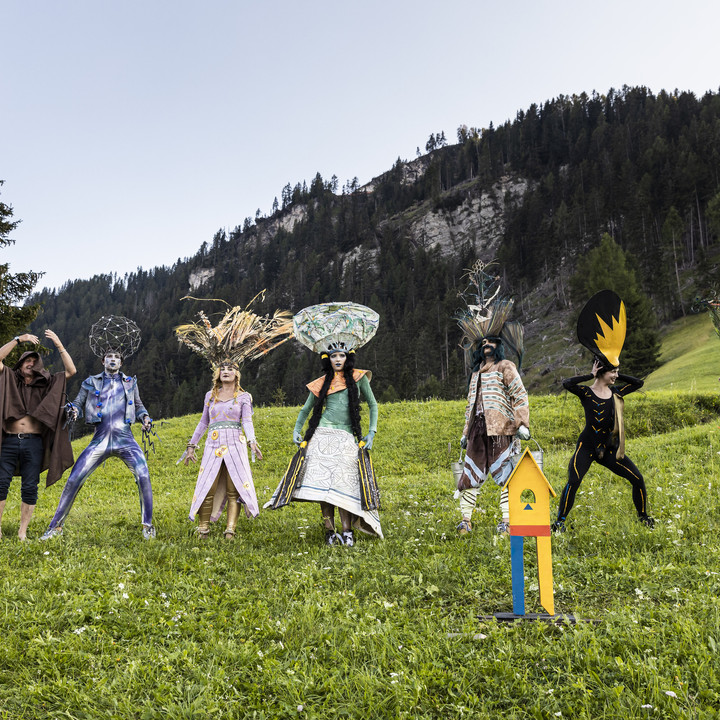Opening Performance
Paulina Olowska
Slavic Goddesses and the Ushers
July 7, 2023

"Their hair in sadness becomes a weave of dry thorns and thistles. In gladness, on the contrary, they blossom into green leaves, colorful flowers, and even fruit. And the fragrant wreath of a god's head is not worn, but it is a self-generated halo of their wondrous, dew-covered figure."
Zofia Stryjeńska, 1938
For the glamorous inauguration of the Summer exhibition program, Kestner Gesellschaft is delighted to present the German premiere of Slavic Goddesses and the Ushers, an acclaimed performance-cum-tableau-vivant by the Polish artist Paulina Olowska (*1976). Olowska’s enduring position of reinterpreting modernism includes folkloric storytelling, witchcraft, medieval knowledge, fashion, feminism, socialism and the exploration of a connective ability of nature.
Having often addressed questions of female alchemy and cultural convention in her work which consists of painting, sculpture and performance, in Slavic Goddesses and the Ushers Paulina Olowska revisits the work of the visionary Polish artist Zofia Stryjeńska (1891–1976). A leading light of the Polish cultural scene in the interwar period, later consigned to oblivion by the Communist regime, Zofia Stryjeńska created a multidisciplinary oeuvre (painting, graphic and stage design), influenced by her country’s rituals and folklore. Exploring Stryjeńska’s notion of ballet as a “wreath of ceremonies,” and designing costumes after her 1918 painting series Bożki słowiańskie (Slavic Deities), Olowska brings to life Stryjeńska’s iconic protagonists, six Slavic goddesses, in a magical and evocative performance of resilience and magic, thus paying a powerful tribute to an influential female artist from the past, a feminist pean against invisibility, erasure and war.
Olowska’s protagonists’ surreal garments, with their enormous headdresses and their decorations of peacock feathers and wheat stalks, represent fanciful figures from Slavic mythology and folklore: goddesses of mischief, prosperity, fate, spring, winter, and the skies, with “bodies of clay, hair of wheat or branches, thorns and thistle.” In Slavic Goddesses and the Ushers, the narratives concerning the rituals around death/birth and winter/spring are conveyed via costume, movement, sound, and lighting. This is the artist’s powerful commemoration of the "great reverence for mysteries and gifts of nature."
An original score by American artist Sergei Tcherepnin, which accompanies the performance, mixes cosmic sounds with traditional Mazurkas, Polkas, and Oberkas, as well as “spiritual disco” and other local musical traditions. Tcherepnin composed an electronic variation, an ethereal, site-specific soundscape, played through loudspeakers, a music for the Slavic goddesses to move and dance their celebration of rejuvenation, metamorphosis and a reunion with nature.
Learn more about Paulina Olowska in the handout on the performance.
Visit us
Patrons / Partners

